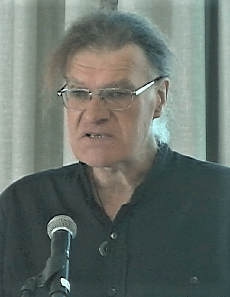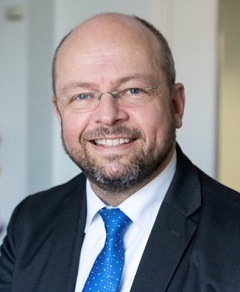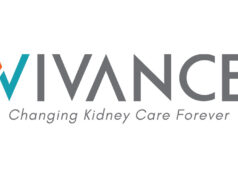
As dialysis modalities go, peritoneal dialysis (PD) is currently among the more popular choices in treating kidney disease patients. For many physicians, its perceived benefits—a decreased burden on the patient and their day-to-day living arguably being the most important of these—place it somewhere between the ‘gold standard’ of transplantation and the increasingly maligned option of in-centre haemodialysis within therapy algorithms.
Even those who champion PD, however, are somewhat divided when it comes to the most appropriate way to surgically facilitate this at-home alternative to traditional haemodialysis treatments. Here, we take a closer look at two leading techniques for PD catheter placement, percutaneous surgery and laparoscopic surgery, with Renal Interventions editorial board member Ziv Haskal (University of Virginia, Charlottesville, USA) posing the question: Do newer approaches in this space represent a time-due advance, or simply a tempest in a tribal teapot?
A
Modified Seldinger technique provides option for safe, immediate access to peritoneal dialysis
“Modified Seldinger PD with ‘urgent start’, in my view, is the safest way to place a PD catheter, and I think it will dramatically change how units manage end-stage kidney disease [ESKD] and how they run their dialysis service,” Jan “John” Swinnen (University of Sydney/Westmead Hospital, Sydney, Australia) informed audiences at the Controversies in Dialysis Access (CiDA) meeting (11–12 December 2021; Dallas, USA).
Swinnen presented this viewpoint on his preferred method for establishing PD—‘urgent start’ Seldinger PD (USSPD)—during a session on home dialysis modalities, stating that it can enable treatment to begin in as little as 24 hours. He began by noting that there are four major modalities in the treatment of ESKD—haemodialysis, PD, renal transplantation and medical management—but that PD is “much underused” across the globe.
Alongside open, laparoscopic and peritoneoscopic surgeries, the Seldinger technique is one of four overarching ways to place a catheter for PD, he continued. Swinnen further stated that he has worked to increase usage of the USSPD technique—a blind yet less traumatic method—at Westmead Hospital in an effort to decrease the number of patients starting dialysis with a Vascath central venous catheter (CVC). On top of this reduction in Vascath deployment and its associated complications, Swinnen relayed additional benefits with USSPD, including the fact there is no need to wait for arteriovenous fistula (AVF) maturation, nor any need to wait for surgical healing as with open or laparoscopic approaches.

Swinnen added that it can be readily done under local anaesthetic, plus a minor sedation, and in “virtually anyone”, including the sickest patients, and obesity and full anticoagulation are not contraindications to the procedure. Preservation of residual renal function is another advantage of USSPD, he said, which is “a very important point that escapes a lot of access surgeons”.
“I believe that modified Seldinger PD is an essential tool for the endovascular fistula surgeon,” Swinnen continued. “It is a get-out-of-jail-free card when the patient has intractable steal syndrome, or impaired cardiac function and a high-flow fistula, or if they have an occluded fistula with no other good options.” He added that this technique is an endovascular procedure requiring high-grade ultrasound to guide the initial puncture, radiological imaging, a “good range” of endovascular equipment, and also reverse mapping of the catheter—all of which are familiar to endovascular fistula surgeons.
Swinnen then relayed details of the technique itself, claiming the entire procedure is done via a single 5mm incision. Accessing the peritoneal cavity is the “critical step” here, he added, and emphasised the importance of learning to insert the needle at the correct angle. The speaker drew comparisons between current acute PD protocols and his centre’s new Seldinger-based system—reporting a reduced timeframe from 8–12 weeks to two, and zero in-centre dialysis sessions or outpatient visits (versus 120 and four, respectively), with the latter.
“The system we have introduced has been very successful and has taken over most of the PD work in our hospital,” he added. Expanding on this experience with USSPD, Swinnen said his centre embarked on a pilot project involving 10 basic cases in July 2019 and—as of December 2021—has completed 90 cases without seeing significant complications. “We are now placing up to six modified Seldinger PD catheters per week,” he reported. Swinnen noted other observations, including increasing acceptance and enthusiasm, ever-broadening use indications, and a shift away from haemodialysis towards PD nursing and early training.
He concluded with a nod towards data from the first 65 of these cases, which were recently published in the Journal of Vascular Access, and found a technical success rate of 97% and saw some 36% of patients starting PD within 24 hours of catheterisation. The USSPD approach is also set to feature in a Kidney Academy CME module at www.kidneyacademy.com.
Advanced laparoscopic technique carries no technical contraindications for peritoneal dialysis
Laparoscopic surgery should be preferred to open and percutaneous approaches when it comes to placing a peritoneal dialysis (PD) catheter—but the technique used pales into insignificance against the need for multidisciplinary, dedicated teams overseeing this process.
That is according to Frank Dor (Imperial College Healthcare NHS Trust, London, UK), who chaired the committee behind the 2019 International Society for Peritoneal Dialysis (ISPD) guideline update on optimising PD access in adult patients. The guideline is published in the journal Peritoneal Dialysis International.
Dor is a strong advocate for PD in patients requiring renal replacement therapy. Speaking to Renal Interventions, he cites increased freedom due to its home-based nature, preservation of urinary output, lessened negative impact on cognitive function and cardiovascular factors, and reduced costs, as key benefits versus haemodialysis. However, the place for PD in this care pathway is uncertain—haemodialysis is often ‘the default’, while pre-emptive live donor kidney transplantation represents ‘the ideal’.
According to Dor, PD is currently underutilised and is “very dependent on relatively few enthusiasts globally”, with mixed uptake rates being seen between geographies due to cultural differences and funding discrepancies. He notes that there are currently two major techniques for PD catheter placement: surgical methods, such as advanced laparoscopy or an open operation, under general anaesthetic, and percutaneous approaches, such as the Seldinger technique, under local anaesthesia.
Dor believes laparoscopy is the best of these options, not least because increased visibility enables the whole abdominal cavity to be inspected, and it makes possible adjunctive procedures like rectus sheath tunnelling, omentopexy, adhesiolysis, colopexy or epiploic appendicectomy and concomitant hernia repair to reduce risk factors and ensure maintenance over time. “These are all things you simply cannot do with other techniques,” Dor states.
This notion of advanced laparoscopy as the go-to technique is also reflected in the most recent ISPD guideline update. However, Dor concedes, while an ideal-world scenario may see this approach used more widely, the reality is that surgical theatre access poses a major logistical challenge, and a lack of proper surgical enthusiasm and training as well as the “big issue” of healthcare system costs also make laparoscopic techniques tricky to commit to.

The flip side is that patient selection biases mean percutaneous alternatives tend to be less-affected by many of these factors—as they are cheaper, do not require theatre access, can be performed by nephrologists or specialised nurses, and allow the patient to leave hospital shortly after. “Quite a lot of people do have a percutaneous PD catheter insertion—and it works well for many patients, especially those deemed too high-risk to undergo general anaesthetic,” Dor continues. On the reasons why some prefer this approach, Dor says this is largely due to the aforementioned practicalities offered.
“However, I would challenge that very fiercely,” he adds, “because I do not think we should settle for an option that is second-best and less safe—from a theoretical point of view, but also from a practical perspective.” Here, he cites bleeding complications, unsuccessful procedures due to inability to proceed safely, a lack of visibility (even under ultrasound), periprocedural pain/trauma for the patient, and ultimately a greater likelihood of interventions or failure, as being among the downsides to percutaneous catheter placement.
“I do not think it is suitable for all patients, because there are clear contraindications, such as obesity and previous abdominal surgery, both in my view and in the ISPD guidelines,” Dor adds, also claiming that, in terms of equity of access, if a healthcare provider only offers percutaneous options, these contraindications may unrightfully preclude patients from receiving PD entirely—something he feels should “never happen”. He further notes that, even in patients not suitable for general anaesthetic, he personally prefers an open surgical approach with a regional block over percutaneous techniques, as the former is safer.
“The problem in PD is that there are not many high-quality studies allowing us to compare these techniques in an unbiased way—which are all very much dependent on who is delivering them and the overall centre setup,” Dor claims. The importance of the technique used for catheter placement pales into insignificance, he believes, against the need for a multidisciplinary, dedicated team, with tailor-made approaches towards operation technique.
Surgical and percutaneous approaches alike can be performed successfully and produce good outcomes in the hands of the right specialist and, if the patient has a contraindication for either, Dor says physicians should direct them towards the more suitable option. “But, if there is an equal choice…the patient should be advised on what the pros and cons are of each so they can declare their preferred technique,” he adds. “And this does not really happen— even in high-volume centres. We can improve on that, to put it mildly.”
Dor also feels that the scope for new technologies to improve this state of play is limited right now, and, while the ability to conduct laparoscopic PD catheter insertions without requiring general anaesthesia would be “superb”, tangible developments do not seem to be on the horizon here. As such, he states that ensuring the presence of dedicated, enthusiastic, sufficiently trained professionals in the PD pathway is key moving forward. “I think the biggest innovation would be making PD accessible for everyone—and there should not be a single, surgical contraindication or technical reason why even the most complex, challenging patient cannot have a PD catheter placed,” Dor concludes.












